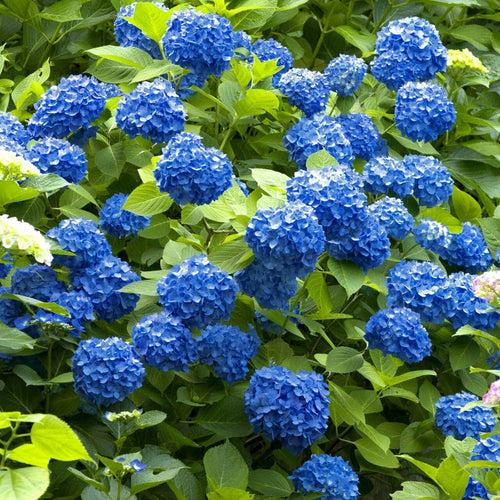Caring for your Hydrangeas
Gardening does not stop when the roots hit the soil. It is not simply planting but a whole slew of responsibilities to ensure your planted seeds develop into something healthy and beautiful. The thrill of gardening is that the amount of effort and attention put into the care of a plant will directly equal the amount of joy and happiness the caretaker receives when the plant is in gorgeous bloom. Most people have preconceived notions that shrubbery is bland. The first image to come to mind is a bare bush that is knee to chest high and requires more work than it’s worth. The shrub alters all perceptions of shrubbery, flaunting magnificent flower heads and a vast assortment of colors. They are one of the more elegant members of the shrub world and are relatively easy to maintain. Like perennial plants, these types of shrubs have blooms for decades.
Hydrangeas Are Stunning
There are numerous variations of hydrangeas, along with seemingly limitless color combinations, so choosing the suitable shrub for your garden will be challenging. They are split into groups based on where the flowers bloom. Shrubs that bloom on new growth forms cultivate their shoots on newly developed parts of the plant and consistently flower each year with little to no special maintenance. Nine Bark are smooth shrubs that can stand cold winters more easily. They are the most common cultivators of the shrubs. They both bloom beautifully on newer wood each spring. The second category of them can only flower leaves on the older wood parts of the plant that grew in last year’s season. Oak Leaf shrubs are native to the southern United States and have various nicknames for their snowball-like flowers. These hydrangeas will not sprout flowers in the first year and might still underachieve in the second and third years. However, after a couple of seasons, they will soon support glorious flowers.

Another way of differentiating them is by the type of flowers they bloom. They typically have two specific types of bloom formations. The “mophead” bloom is a boisterous cluster of flowers. The “lace-cap” bloom is thought to be the more elegant of the two and sports flattened, seed-bearing flowers. While these types are most popular, the variations of hydrangeas are spectacular and should be celebrated.
Once you have decided what type of hydrangea to plant, choosing a proper location is the next priority. Hydrangeas thrive best in partially shady areas, with protection from overpowering winds. Avoid planting hydrangeas in open areas that would leave them unguarded from the elements. Pro Tip: plant hydrangeas on the eastern wall of the house to reduce exposure during the scorching afternoon hours. The soil quality must be top-notch to get the best out of your plants. Hydrangeas prefer slightly moist and nutrient-rich soil that drains quickly. The soil must drain speedily due to the excessive water hydrangeas require to grow. As their name implies, these plants adore water and need regular hydration throughout the year. Having soil that drains too slowly will drown the hydrangea's roots and cause detrimental damage to your plant.
Blooming Hydrangeas
In bloom, hydrangeas paint the world with their elegant and subtle colors. The specific color of each hydrangea is made possible by a whole list of factors. A group of seedlings can all turn out with different colors based on soil type, fertilizer, and the chemical makeup of your backyard garden. Changing the color of your hydrangeas is also possible. Determine the pH balance of your soil and add either sulfur (for bluish hues) or limestone (for pinkish hues). Try adding different amounts and types of fertilizer and chemicals to different variations of hydrangeas each year to appreciate how unique these flowers are full. Hydrangeas allow you to have a rainbow of colors right in the comfort of your backyard or in any homemade flower arrangements.
Pruning is a crucial step intending to hydrangeas and occurs after your plant has begun to grow for an entire season. Some hydrangeas can grow strong and healthy for many years without even needing a trim, but it leads to healthy plant development for most. The proper pruning length depends entirely on the hydrangeas’ variation, age, and strength. Over time some plants may lose their stem vigor and struggle to hold the weight of their vibrant bounty, so clipping them to grow back stronger can revitalize the hydrangea. The blessings of these plants appear in the colorful blossoms of their flowers and in choosing a wide selection of hydrangeas that will bloom at alternating periods during the spring, summer, and fall. Oak Leaf hydrangeas bloom the earliest, in late spring. Smooth and Panicle hydrangeas peak at alternating times during the summer months. Tend faithfully to your plants, especially concerning water, and you will have lovely blooms for quite some time. Buy your Hydrangeas today at TN Nursery.



















































